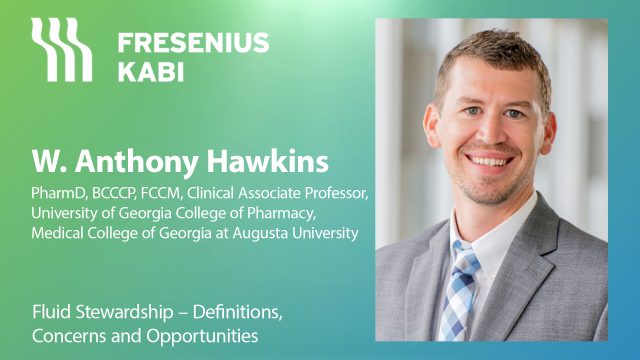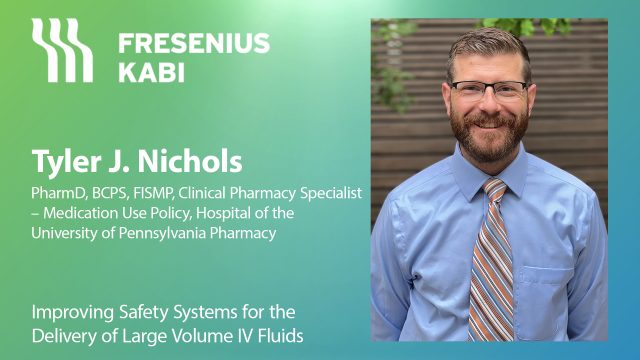Advertisment
How the donors have changed in the last ten years
Dr Irene Scalera, Fellow at the Liver Unit at Queen Elizabeth Hospital, Birmingham, describes the ever-changing donor landscape and attempts to improve liver donor shortage.
Introduction
In the last decade better patient selection, advances in surgical techniques and in peri-operative care have resulted in improved outcomes of organ transplantation. However donor shortage remains the major limitation resulting in an increasing number of deaths of patients on transplant waiting lists. This shortfall has led to the development of living donor transplantation, split-liver transplantation, the reintroduction of organs following Donation after Cardiac Death (DCD) and the use of extended criteria donors. The reintroduction of DCD organs and extended criteria organs from Donation after Brain stem Death (DBD) has led to attempts to improve the function of these organs by using ex– and in-vivo machine perfusion.
DCD/DBD
The first heart transplanted by Barnard was retrieved from a DCD donor and the first kidney transplantations were from asystolic donors but for many years DBD organs have been the main source of organs for transplant. The continued fall in numbers of DBD organs has led to a re-igniting of enthusiasm for organs from DCD. In the United Kingdom DCD has been increasing over last decade and the UNOS data demonstrates the same trend in the US. Despite this increase the number of transplants from cadaveric donors remains largely unchanged. One explanation for this change might be an earlier decision on treatment futility leading to treatment withdrawal in patients who might have become brain stem dead in the past. In addition there have undoubtedly been limited improvements in neurocritical care management.
Lung: Lung transplantations from controlled DCD have seen a slight increase in the last 10 years. The results of highly selected DCD organs appear to be comparable to those obtained following transplantation of DBD organs.1 The survival reported ranges from 72 to 100% at 1 year and from 47 to 80% at 3 years and the outcome between standard and expanded criteria donors is not statistically different. 2
The use of lungs from uncontrolled DCD remains controversial due to the high risk of ischemic-reperfusion injury: the high rate of primary non function and its impact on the mortality. Recently a Spanish group has published the feasibility of ex-vivo allograft assessment followed the transplant of Maastricht I DCD donor with good results. This could be a new strategy to expand the donor pool but further studies are needed.3
Kidneys & Pancreas: The best results of DCD organs have been achieved in kidney transplantation. Donor weight, the donor ICU stay and the use of adrenaline in the donor were important risk factors in the first kidney transplant era. Donor age and history of hypertension are still the most important predictors of poor transplant outcome. The UK Kidney Donor Risk Index (UKKDR) considers donor age, a donor history of hypertension, donor weight, days in hospital and the use of adrenaline to evaluate the deceased donor risk. A DCD organ, a history of cardiothoracic diseases, diabetes and creatinine at the time of donation has not been demonstrated to have a significant effect on long term outcome.4
There is however a higher risk of Delayed Graft Function (DGF) with a DCD kidney but DCD organs remain a good resource for kidney transplantation.
Ex-situ machine perfusion has been used to improve the outcome and to expand the use into uncontrolled DCD donors. This approach seems to reduce the incidence of DGF and leads to a good graft survival5. The success of machine perfusion of kidneys has led to an increased interest of machine perfusion of other organs including liver, lung and cardiac transplantation.
The overall and graft survival, the rate of pancreas-related surgical complications, vessel thrombosis, post transplant fasting blood glucose and HbA1c levels are similar between DCD and DBD pancreas transplants. 6
Livers: The patient and graft survival after DCD liver transplantations is reported as between 60-70% this is not dissimilar to the outcomes after transplantation with DBD livers.7 A higher incidence of primary graft non function and biliary complications have however been reported following transplantation using DCD livers. Many factors have been reported to influence the outcome: donor warm ischemia time (WIT) more than 30 min, a cold ischemia time (CIT) more than 8-10 hours, donor older than 50-60 years and donor weight more than 100kg. Despite these findings there is no doubt that the criteria for use of DCD livers is expanding but the definition of “marginal donors” still lacks agreement. Good results have been obtained expanding the age of donors beyond 60 years but by selectively using a donor older than 60 years but with no other risk factor. Similarly, longer WIT and CIT, high BMI alone have been used with good outcomes.8
Recent advances have seen the use of uncontrolled DCD or Maastricht category 1 and 2 donor livers. The main criteria in these organs appear to be the duration of WIT. Initial studies reported a high rate of primary non function but some strategies to decrease the ischemic injury have been used, such as an optimal organization with an expert team and air ambulance crew and new techniques of organ perfusion like Extra-corporeal oxygenated machine perfusion (ECMO).9
ECMO perfusion of DCD livers has shown improved results in liver transplantation. The warm perfusion of oxygenated blood through the liver appears to preserve the graft better than traditional cold storage. The likely mechanisms are a restoration of the intracellular ATP pool and a decrease in the hypoxia induced cellular injury. Histological findings however show that morphological changes in endothelial cells, such as red cell stasis and oedema, still occur following machine perfusion helping to explain the peri-operative instability of recipients and the graft dysfunction.10
A new approach is in-vivo machine perfusion which has been used in DCD kidney grafts with a reported low risk of DGF. Few reports of this approach are available for the DCD liver grafts and further studies are necessary.
Various pharmacological agents have been used in flushing DCD kidney and livers prior to transplantation in an attempt to improve graft function. Agents such as anti-thrombogenic and vasodilatatory drugs could improve the ischemia reperfusion injury but so far have only been used in animal studies.11
Conclusion
New approaches are going to expand the use of DCD organs and will probable allow the more widespread use of organs from uncontrolled DCD. Identifying the optimal DCD donor remains a challenge and combining a DCD organ with the optimal recipient adds a further level of complexity. Further studies are required to help select the potential donor and recipient and the future will almost certainly lie in optimising the DCD organs using perfusion and/or pharmacological manipulation. Thought should be given to legislative change to prevent the rapid conversion of potential DBD organs to DCD organs. It is unlikely that DCD organs will ever be as good or as many in number as from a DBD donor.
Dr Irene Scalera
Fellow, Liver – University Hospitals NHS Foundation Trust, Queen Elizabeth Hospital, Birmingham, B15 2WB
Irene.scalera@uhb.nhs.uk
References:
- Zych B, Popov AF, Amrani M, Bahrami T, Redmond KC, Krueger H, Carby M, Simon AR. Lungs from donation after circulatory death donors: an alternative source to brain-dead donors? Midterm results at a single institution. Eur J Cardiothorac Surg. 2012 Feb 26. [Epub ahead of print]
- Wigfield CH, Love RB. Donation after cardiac death lung transplantation outcomes. Curr Opin Organ Transplant. 2011 Oct; 16(5): 462-8
- Gomez-de-Antonio D, Campo-Cañaveral JL, Crowley S, Valdivia D, Cordoba M, Moradiellos J, Naranjo JM, Ussetti P, Varela A. Clinical lung transplantation from uncontrolled non-heart-beating donors revisited.J Heart Lung Transplant. 2012 Apr; 31(4): 349-53. Epub 2012 Feb 3
- Watson CJ, Johnson RJ, Birch R, Collett D, Bradley JA.A simplified donor risk index for predicting outcome after deceased donor kidney transplantation. Transplantation. 2012 Feb 15; 93(3): 314-8
- Treckmann J, Moers C, Smits JM, Gallinat A, Maathuis MH, van Kasterop-Kutz M, Jochmans I, Homan van der Heide JJ, Squifflet JP, van Heurn E, Kirste GR, Rahmel A, Leuvenink HG, Pirenne J, Ploeg RJ, Paul A. Machine perfusion versus cold storage for preservation of kidneys from expanded criteria donors after brain death. Transpl Int. 2011 Jun; 24(6): 548-54
- Bellingham JM, Santhanakrishnan C, Neidlinger N, Wai P, Kim J, Niederhaus S, Leverson GE, Fernandez LA, Foley DP, Mezrich JD, Odorico JS, Love RB, De Oliveira N, Sollinger HW, D’Alessandro AM. Donation after cardiac death: a 29-year experience. Surgery. 2011 Oct; 150(4): 692-702
- Dubbeld J, Hoekstra H, Farid W, Ringers J, Porte RJ, Metselaar HJ, Baranski AG, Kazemier G, van den Berg AP, van Hoek B. Similar liver transplantation survival with selected cardiac death donors and brain death donors. Br J Surg. 2010 May; 97(5): 744-53
- Tariciotti L, Rocha C, Perera MT, Gunson BK, Bramhall SR, Isaac J, Buckels JA, Mayer AD, Muiesan P, Mirza DF. Is it time to extend liver acceptance criteria for controlled donors after cardiac death? Transplantation. 2011 Nov 27; 92(10): 1140-6
- Roberts KJ, Bramhall S, Mayer D, Muiesan Uncontrolled organ donation following prehospital cardiac arrest: a potential solution to the shortage of organ donors in the United Kingdom? Transpl Int. 2011 May; 24(5): 477-81
- Jain S, Xu H, Duncan H, Jones JW Jr, Zhang JX, Clemens MG, Lee CY. Ex-vivo study of flow dynamics and endothelial cell structure during extended hypothermic machine perfusion preservation of livers. Cryobiology. 2004 Jun; 48(3): 322-32
- Perera MT, Bramhall SR. Current status and recent advances of liver transplantation from donation after cardiac death. World J Gastrointest Surg.2011 Nov 27; 3(11): 167-7






